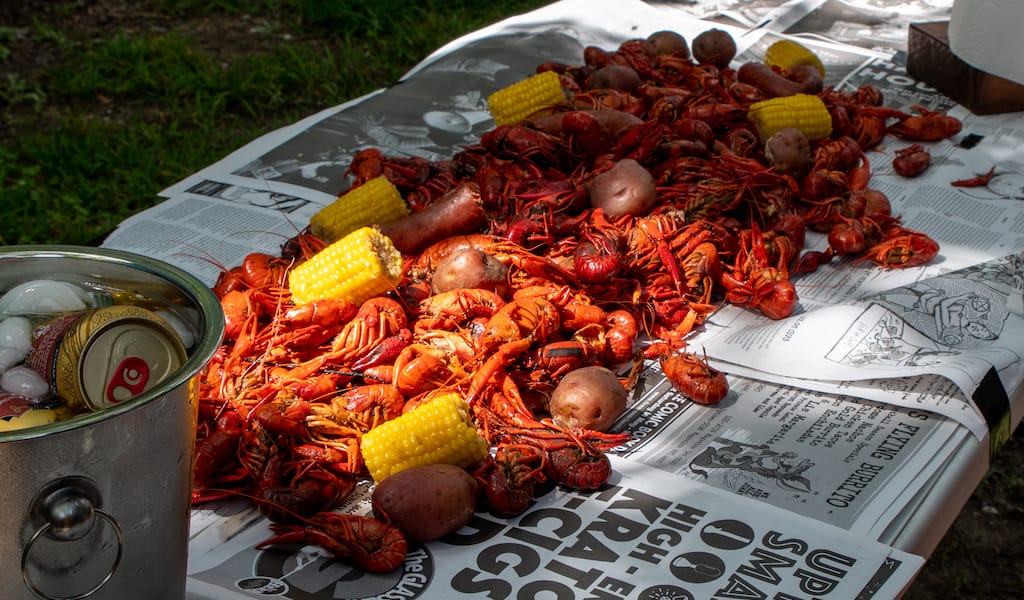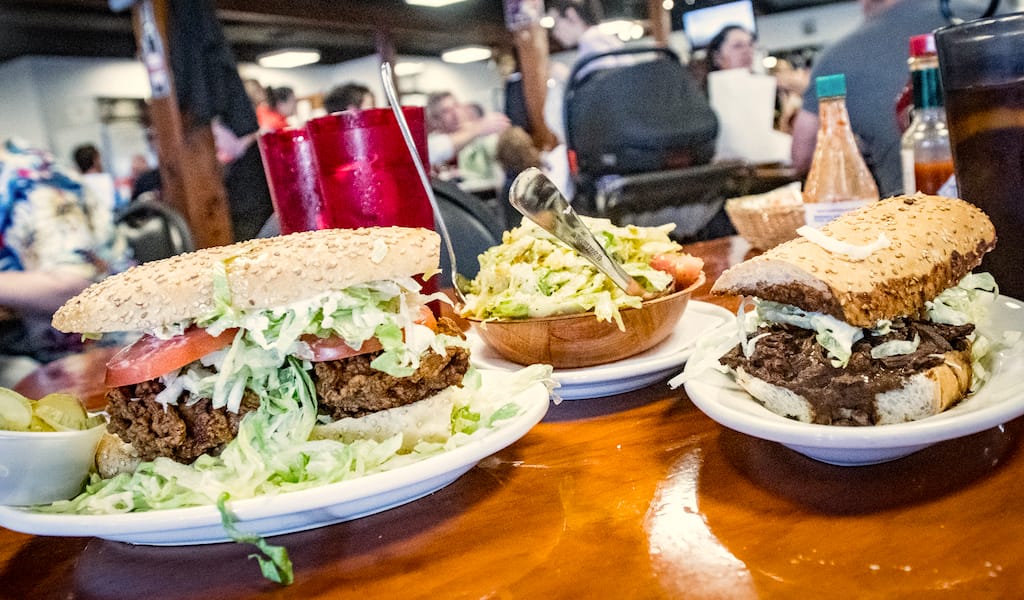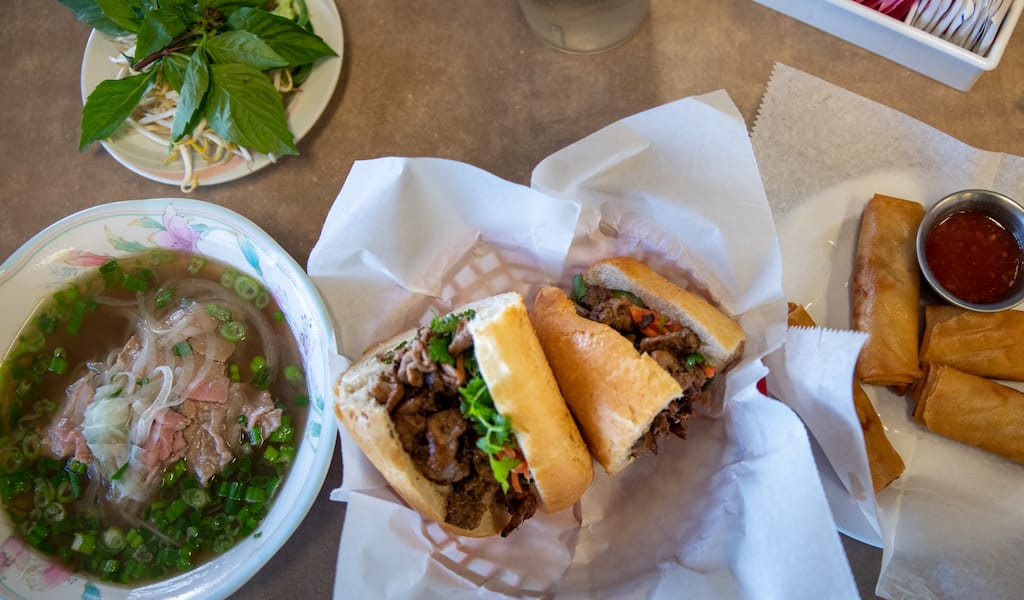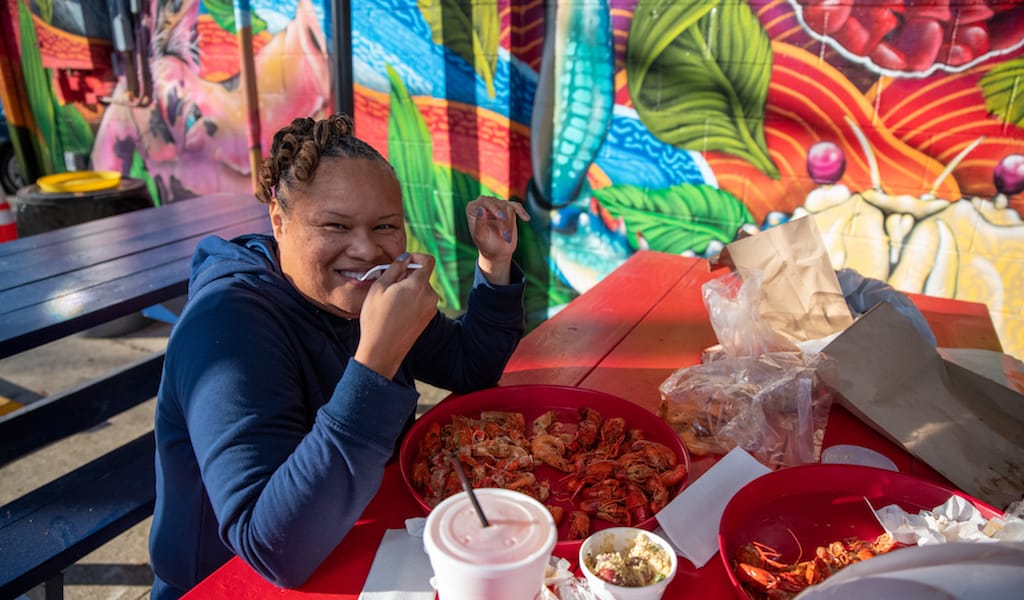Ahead of our recent launch in New Orleans, we spoke to our walk leader Dianne Honore and contributors James Cullen and Pableaux Johnson about the Crescent City’s rich and storied food scene and its deep connections to traditions and community. We originally shared what they had to say in our New Orleans launch newsletter (you can sign up for our newsletters on our main page to receive exclusive, behind-the-scenes content like this every week), but what they had to say was so informative and interesting that we decided to share it more widely.
Dianne is a history buff, cultural preservationist, founder of the Black Storyville Baby Dolls, Queen of the Yellow Pocahontus Hunters Black Masking Indian Tribe and cooking instructor. She grew up in the city’s historic 6th ward, in a family that ran a local Creole restaurant, and is a three-time cancer survivor. Pableaux is a New Orleans-based photographer, journalist and author of three books on Louisiana food culture. James studied classical French cuisine at the storied French Culinary Institute and has spent the past 16 years working in kitchens in NYC and New Orleans, and is currently the Executive Chef of Latrobe’s on Royal, a high-end venue in New Orleans’ French Quarter.
An edited version of our Q&A is below:
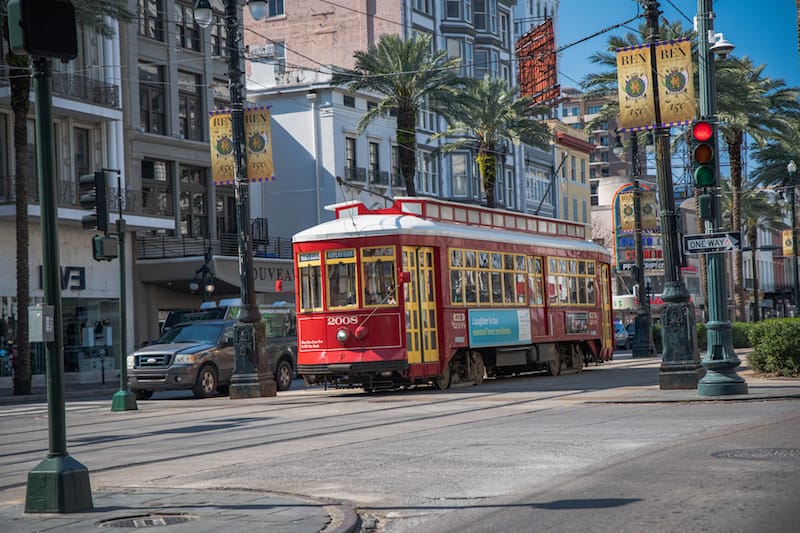
What do you think makes New Orleans such an exciting culinary capital?
James: New Orleans has a true local cuisine that, like its culture, can’t be found anywhere else in the United States. The African, Caribbean, Spanish, French, Italian, German, Vietnamese and Indigenous people (and many others) have all influenced and contributed to New Orleans cuisine. Dishes like gumbo, etouffee, grits and grillades, turtle soup barbecue shrimp, po’ boys and so many others are unique to our city and form a culinary frame of reference. But we also have many innovative chefs building on our classic foodways and putting their own spin on it.
Dianne: New Orleans is a fascinating culinary treat for the palate. We are a new world blending of old world foodways. This is also referred to as the Creolization of several cultures in one pot! From the bayleaf of the Ameridians to okra of the Africans, Acadian sausage making and German bread baking, our table represents the coming together of many people. Our food is Creole.
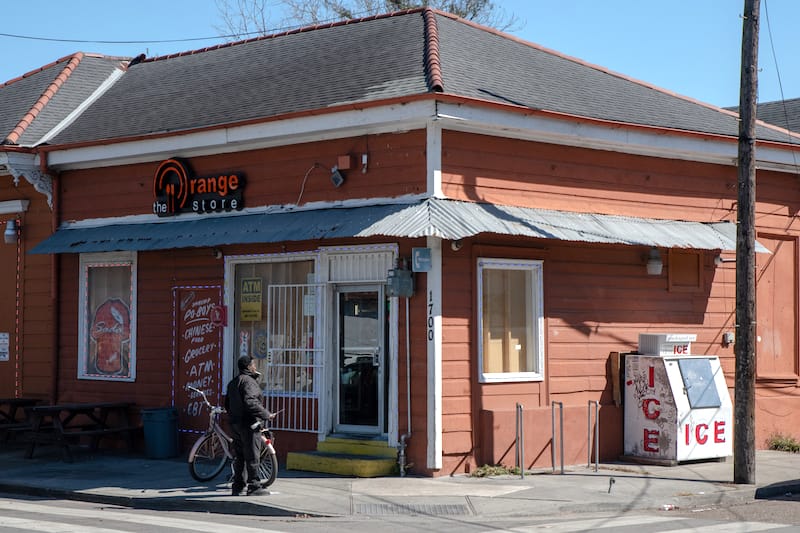
Compared to other cities you’ve been to, what sets New Orleans’s food scene apart?
Pableaux: Because of its history, New Orleans had a vibrant culinary scene way before the modern fascination with the Restaurant Industrial Complex. In a contemporary food world that follows trends and “the next new thing,” New Orleans has a solid dedication to classic dishes and funky neighborhood joints.
Food here is almost a language that all the locals speak – rare is it that you find someone raised here that can’t recommend their favorite down-home lunch joint or special-occasion splurge. Most times, they’ll spend a few minutes giving recommendations of their menu favorites (complete with mouth-watering descriptions).
Dianne: Our food scene is unlike anyplace else because we see each meal as a celebration of life. Our food is a huge part of our Creole culture. There’s an old saying that “In New Orleans, we don’t eat to live, we live to eat!” We take great pride in our food as Creole people and thanks to our ancestors, we combine resilience and ritual with eating. Be it a quiet bistro or Fais do-do [Cajun dance party], each bite of the meal is savored as it is blanketed by layers and layers of history, tradition and, of course, those great blended flavors.
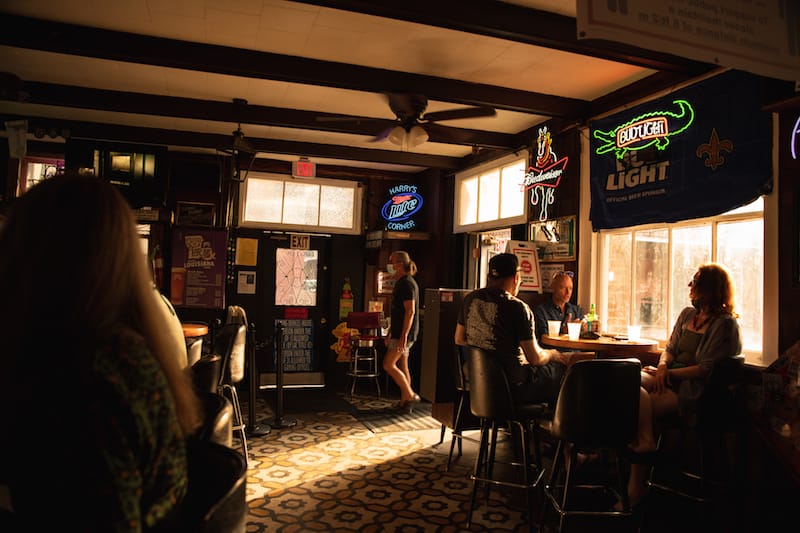
James: I think one aspect that sets it apart is how hyper-local, specific and communal it is. In other cities, you don’t have the same level of cultural mixing as we do here. In New Orleans, the city subsumes and creolizes everything. While there might be a dominant predecessor to a dish, like jollof rice to jambalaya, you also have the Spanish influence of paella. And Sicilian immigrants brought tomatoes into widespread use. And the Germans brought sausage making. And so on. But in New Orleans, we love to share food and traditions. That’s why we still eat red beans and rice on Monday. Why we’ll stand around a table of crawfish drinking beers and telling stories. We do things together here.
In New York and L.A., fine dining is king, but in New Orleans, it’s all about the neighborhood joints, the hole-in-the-walls and even gas stations. Food is everywhere here. But the most satisfying food that isn’t found in people’s homes is definitely in our joints, small barroom kitchens, and the neighborhood places that have served us for generations.
Despite the diversity found in the city’s cooking, is there a thread that runs through it all?
Pableaux: I think it’s the sense of human scale. New Orleans doesn’t follow the 20th-century model in most of the important ways, so we’re a comparatively tiny city. We still live close to each other – the neighborhoods and residents change over time, but the connections remain intact. Locals will talk to strangers or offer to help folks who look lost. Restaurant folk greet you with, “Hey baaaaby…” and welcome you in. That sense of connection makes genuine hospitality one of the city’s many superpowers. And it’s that deep human feeling that elevates just about any New Orleans food experience.
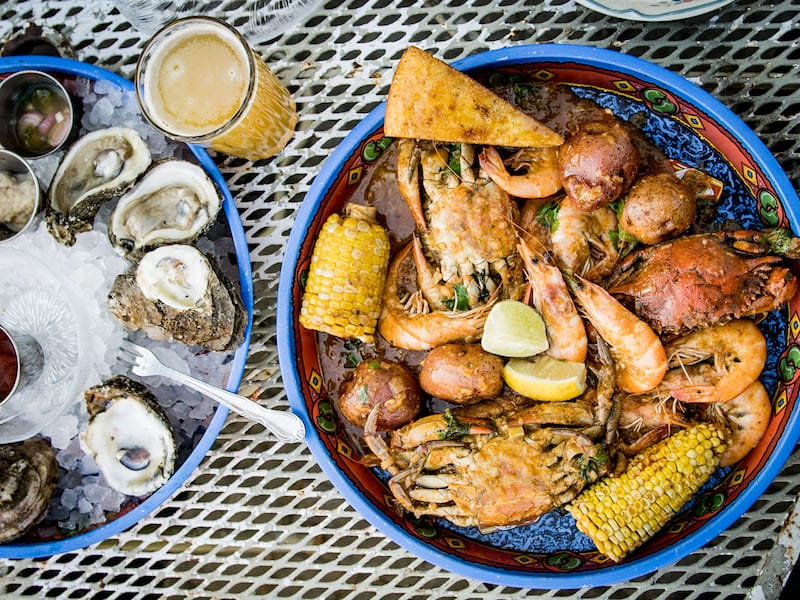
This is a busy season in New Orleans. How would you describe the role that food and cooking plays during Mardi Gras and Lent?
Dianne: Being able to participate in Carnival season and Mardi Gras feels very special. Being a Black Masking Indian, I am closely connected to the local community and centuries-old traditions. Our sculpted suits and street rituals are a sacred celebration of resistance and resilience. So, to share that in our neighborhoods after dealing with Covid and so much else feels like a release.
Cooking is central to Mardi Gras. After all it is the feast of the flesh! Ha! Seriously, from king cake to exquisite royal court brunches to picnic style fried chicken and muffalottas for the parade routes, there is a plethora of delicious eats all over the city. Gumbo at grandmas, red beans and grilled pork chop sandwiches under the bridge!
James: Food and cooking are so important during Mardi Gras. Mardi Gras is the party we throw for ourselves, and when we throw a party In New Orleans we like to eat. We buy boxes of fried chicken and king cake and share them along the parade route. Your cousin or friends might be boiling crawfish or grilling nearby. We have boozy brunches with grits and grillades and eggs benedict. And a hot sausage po’ boy might save your life after a few too many drinks. We live to eat here.
Pableaux: The foods of Carnival season are tied to the city in full-tilt revelry mode. Traditionally, it’s a permission slip for full-bore indulgence before Lent (the annual Catholic time of repentance and deprivation).
Mardi Gras traditions are all about casual group gatherings. King Cake is the easiest to spot, since it’s got a proscribed season and you can only eat it between 12th Night and Mardi Gras Day. In a warmish year, Carnival also coincides with the beginning of crawfish season, so backyard boils pop up pretty often. Any parade gathering is going to have a huge box of fried chicken (usually Popeye’s), and of course, oversized bloody marys.
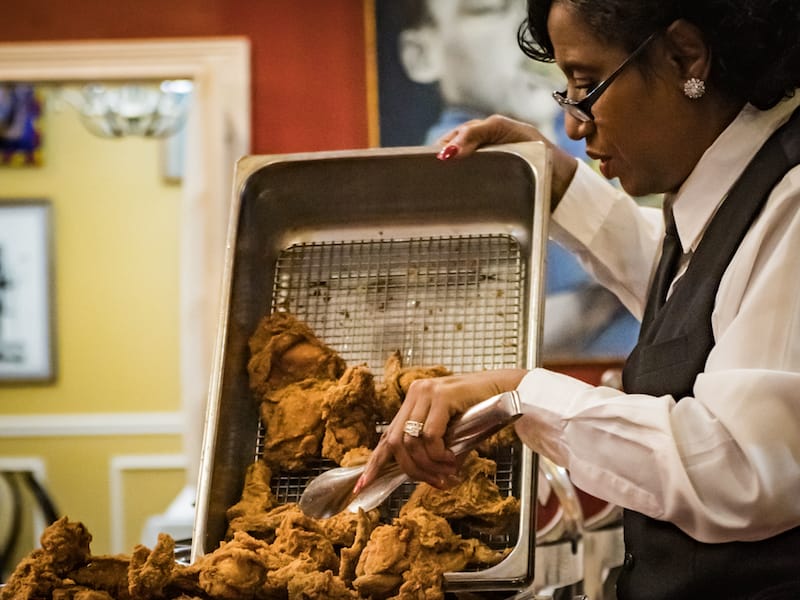
It’s a weekend morning: What’s the first place you think about going to eat in New Orleans?
Dianne: On weekends, I think of Fritai for the Griyo plate or Mandinas for fried oysters or veal parmesan. Fritai is a hip new Haitian place that reaches back to New Orleans Caribbean roots. Mandinas is an old school, Creole Italian New Orleans staple with a large varied menu of local favorites.
James: This is a tough question. Honestly, my first thought is a strong cup of chicory coffee, either hot or iced, depending on the season. As a chef, I work most weekends, but on a day off, I love to sleep in then get a classic New Orleans lunch. Sometimes it’s the fried chicken at Dooky Chase, or a roast beef po’ boy at R&O’s or a hot sausage po’ boy from Sammy’s. Zimmer’s and Domilise’s are always my tops for fried seafood. If I’m up early enough for breakfast, I love getting a pastry or breakfast in a cup from Bywater Bakery or hitting Buffa’s or Clover Grill for brunch. I guess I didn’t answer the question all that well, but it’s so hard to choose.
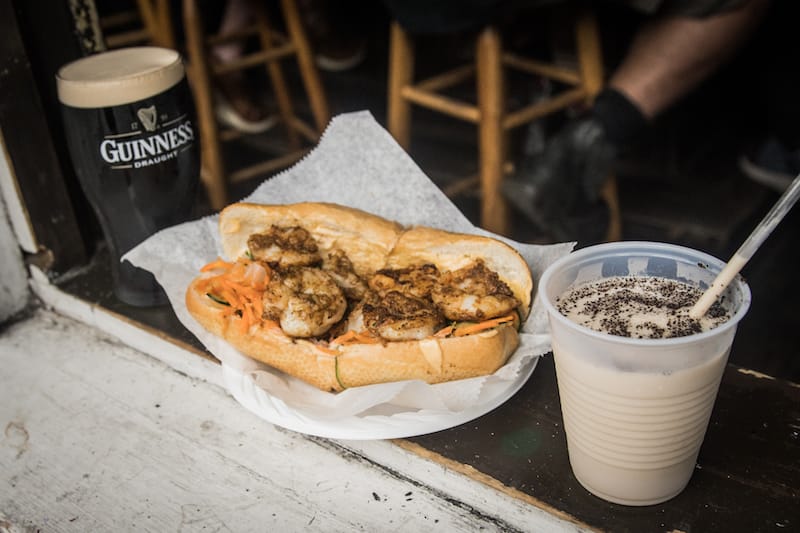
Pableaux: If it’s morning and I’ve got friends in town, odds are I’m slow-rolling the day, sipping coffee and thinking about where to go to do a long, boozy lunch. (My favorite kind of New Orleans meal.)
Strangely, New Orleans is not the strongest breakfast town. Even one of the city’s trademark confections – the sugar-dusted beignet – is more of an afternoon/evening treat. (It’s basically succulent, deep-fried air, if you think about it.)
A perfect weekend in New Orleans doesn’t even fit into the three-meal model – it’s more of a moveable feast. You might start off with a bakery pastry, then wander into a ramshackle neighborhood bar for a midday beer, then an off-hour po’ boy, a nice cocktail to continue the day-drinking vibe, then a couple dozen raw oysters with wine while you discuss dinner options. A quick nap, then cocktails, then an evening meal followed by hot beignets and a nightcap.
Now that’s a day well spent.
 June 1, 2022 R&O’s
June 1, 2022 R&O’s
When longtime locals discuss contenders for “best all-around po’boy shop in all of New […] Posted in New Orleans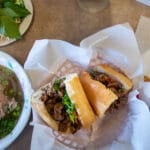 May 9, 2023 Beignets & More
May 9, 2023 Beignets & More
Beignets & More is the kind of place you want everyone to know about – and you don’t […] Posted in New Orleans February 22, 2022 NOLA Crawfish King
February 22, 2022 NOLA Crawfish King
New Orleans is the last communal city in America. Our seasons are Mardi Gras, festivals, […] Posted in New Orleans
Published on April 12, 2022
Related stories
June 1, 2022
New Orleans | By Pableaux Johnson
New OrleansWhen longtime locals discuss contenders for “best all-around po’boy shop in all of New Orleans,” R&O’s is usually an integral part of the conversation. Fans of the stalwart seafood house located a literal stone’s throw from Lake Pontchartrain will wax poetic about a wide variety of the menu’s delectable standouts – Italian salads studded with…
May 9, 2023
New Orleans | By James Cullen
New OrleansBeignets & More is the kind of place you want everyone to know about – and you don’t want anyone to know about. Tucked between a defunct Cineplex and an Off-Track Betting location in a strip mall in Chalmette, a downriver suburb of New Orleans, it is a family-run gem of Vietnamese cuisine. But the…
February 22, 2022
New Orleans | By James Cullen
New OrleansNew Orleans is the last communal city in America. Our seasons are Mardi Gras, festivals, football, second lines and crawfish, and we share them together. And it is no accident that our Carnival season and our festival season are bridged by crawfish season: the ultimate act of communal eating. From late January to early June,…







































